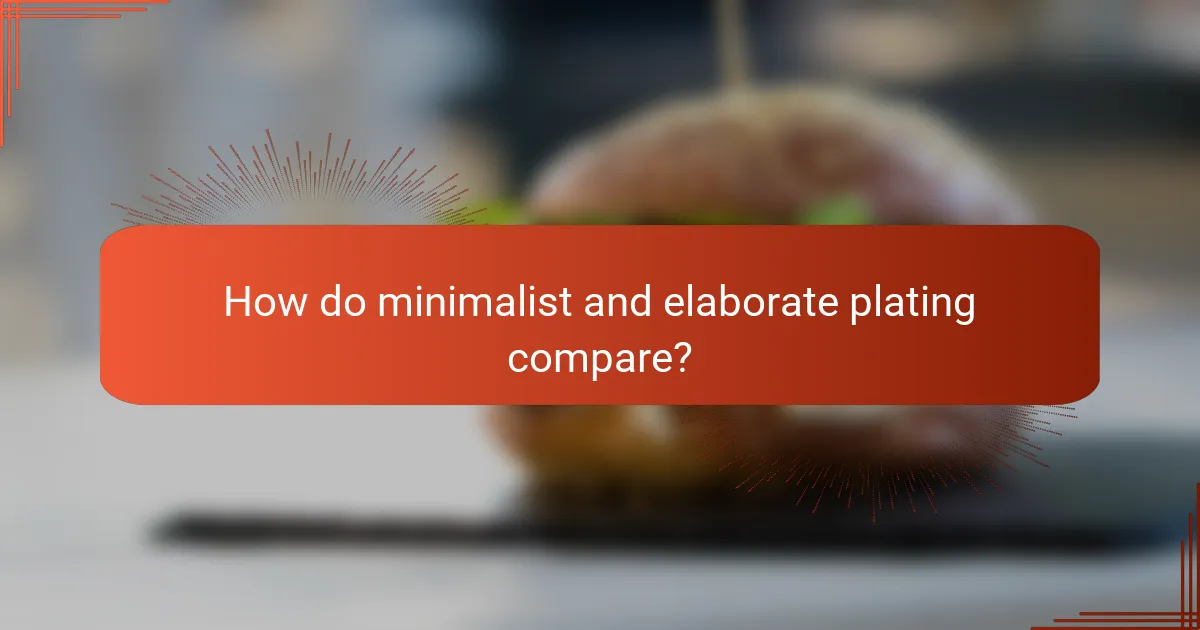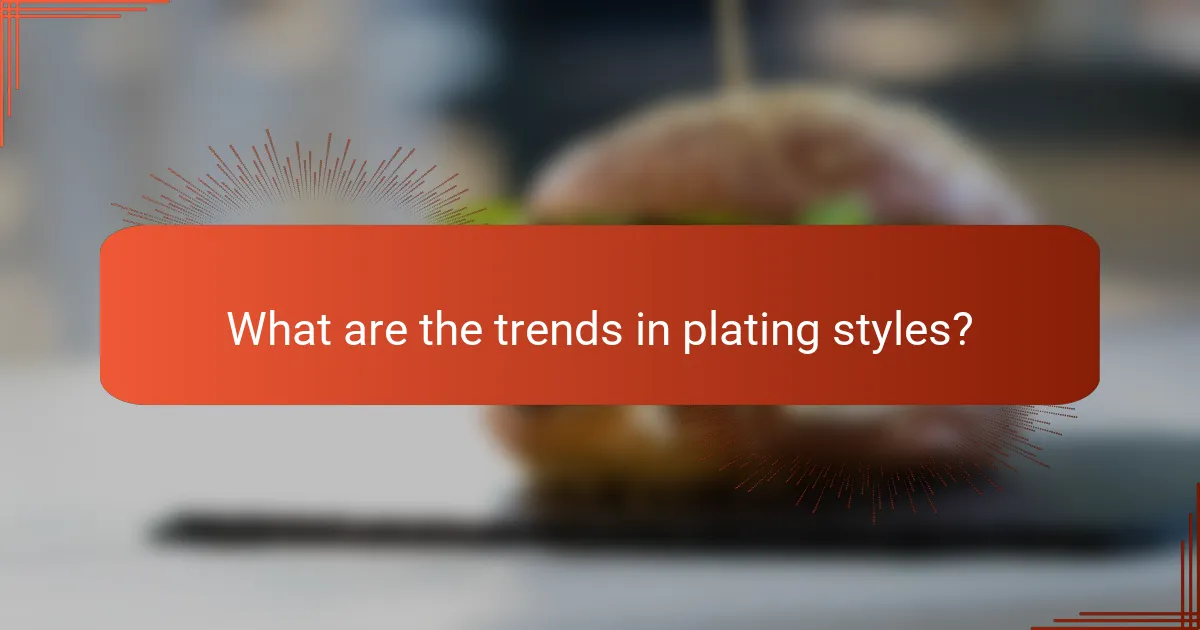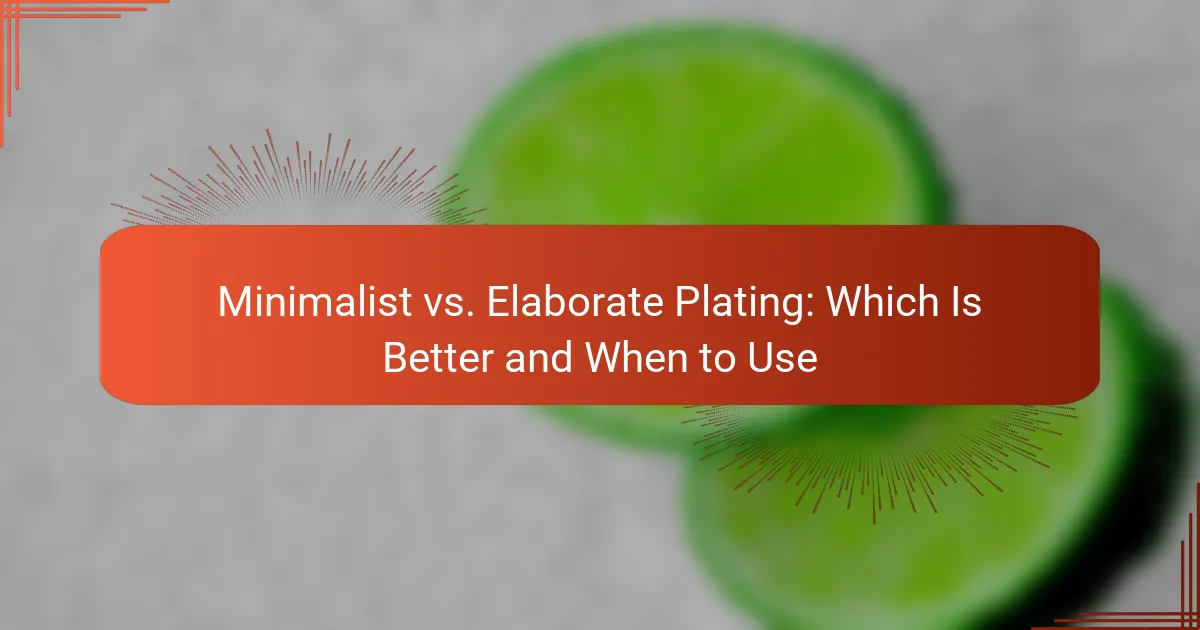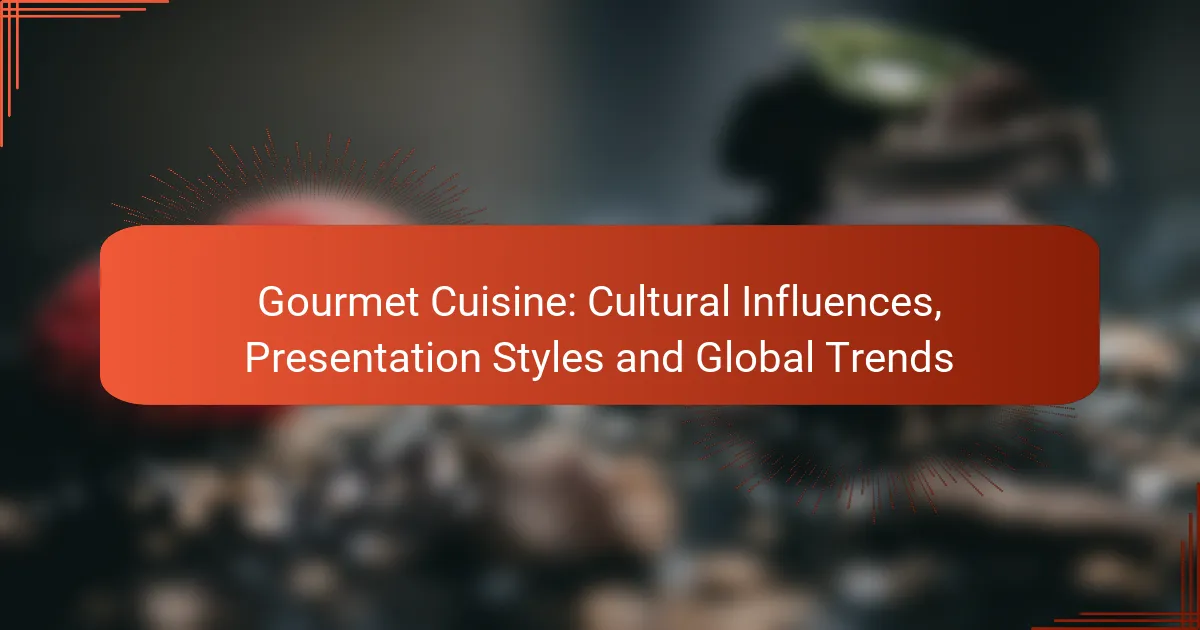When it comes to plating, the choice between minimalist and elaborate styles can significantly impact the dining experience. Minimalist plating emphasizes simplicity and the inherent quality of the ingredients, while elaborate plating enhances visual appeal and can elevate the overall enjoyment of a dish. Understanding when to use each style is key to creating memorable meals that resonate with diners.

When to use minimalist plating?
Minimalist plating is best used when the focus is on the quality and flavor of the food rather than on elaborate presentation. This style emphasizes simplicity, allowing the ingredients to shine and creating a clean, uncluttered dining experience.
Casual dining settings
In casual dining environments, minimalist plating can enhance the overall experience by making meals feel approachable and relaxed. Dishes presented simply can encourage conversation and enjoyment without overwhelming the diner. For example, a beautifully grilled steak served with a small side of seasonal vegetables can be both inviting and satisfying.
Health-focused meals
Minimalist plating is particularly effective for health-focused meals, where the emphasis is on fresh, whole ingredients. This style allows diners to appreciate the natural colors and textures of fruits, vegetables, and lean proteins. A bowl of quinoa topped with vibrant greens and a drizzle of olive oil exemplifies how minimalist plating can highlight nutritious choices without unnecessary distractions.
Quick service restaurants
Quick service restaurants benefit from minimalist plating as it streamlines food preparation and service. By focusing on fewer components, staff can assemble dishes faster, improving efficiency. For instance, a simple burger with a side of fries can be served with minimal fuss, allowing customers to enjoy their meal quickly while still appreciating the quality of the ingredients.

When to use elaborate plating?
Elaborate plating is best used in situations where presentation enhances the dining experience and emphasizes the quality of the dish. It is ideal for settings that prioritize aesthetics and where the visual appeal can elevate the overall enjoyment of the meal.
Fine dining experiences
In fine dining, elaborate plating is a hallmark of the culinary art, designed to impress guests and create a memorable experience. Chefs often use intricate designs, vibrant colors, and unique textures to showcase their skills and the quality of ingredients. The presentation can be as important as the taste, often leading to a multi-sensory experience that justifies higher price points.
For instance, a dish might feature a carefully arranged stack of ingredients, drizzled sauces, and garnishes that highlight seasonal produce. This attention to detail not only enhances the dish’s appeal but also aligns with the expectations of discerning diners.
Special occasions
Elaborate plating is particularly fitting for special occasions such as weddings, anniversaries, or milestone celebrations. These events often call for dishes that are visually stunning, making the meal feel more festive and significant. A well-plated dish can serve as a centerpiece, drawing attention and sparking conversation among guests.
Consider using elaborate plating techniques for a birthday dinner, where a beautifully arranged dessert can serve as a focal point. This adds an element of surprise and delight, enhancing the celebratory atmosphere.
Artistic culinary presentations
Artistic culinary presentations allow chefs to express their creativity and individuality through food. This style of plating often incorporates unconventional elements, such as edible flowers, sauces in artistic splatters, or unique serving vessels. The goal is to create a visual narrative that complements the flavors and textures of the dish.
When aiming for artistic presentations, consider using contrasting colors and shapes to create visual interest. For example, a dish might feature a vibrant beet puree alongside a delicate fish fillet, garnished with microgreens. This not only showcases the chef’s artistry but also invites diners to appreciate the meal as a form of art.

What are the benefits of minimalist plating?
Minimalist plating focuses on simplicity and clarity, allowing the food itself to take center stage. This approach enhances the dining experience by highlighting the quality of ingredients and reducing distractions.
Emphasizes food quality
Minimalist plating draws attention to the inherent qualities of the food, such as color, texture, and freshness. By using fewer elements on the plate, diners can appreciate the flavors and craftsmanship of each ingredient without overwhelming their senses.
For example, a single, beautifully seared piece of fish garnished with a sprig of herbs can convey more about the dish than a cluttered arrangement of sides. This technique is particularly effective in fine dining, where the quality of ingredients is paramount.
Enhances visual simplicity
The visual appeal of minimalist plating lies in its clean lines and uncluttered presentation. This simplicity can create a sense of elegance and sophistication, making the dining experience more enjoyable.
When plating, consider using negative space effectively. Leaving portions of the plate empty can draw the eye to the food, creating a balanced and aesthetically pleasing presentation. This approach is often favored in contemporary cuisine.
Reduces food waste
Minimalist plating can help minimize food waste by encouraging portion control and thoughtful ingredient use. By focusing on fewer components, chefs can ensure that each element is utilized fully and appreciated by diners.
For instance, serving a smaller portion of a high-quality dish can lead to less leftover food, as diners are more likely to finish what is presented. This practice not only benefits the environment but also aligns with sustainable dining trends.

What are the benefits of elaborate plating?
Elaborate plating enhances the visual appeal of a dish, making it more enticing and enjoyable for diners. This style of presentation can elevate the overall dining experience by engaging multiple senses and creating a lasting impression.
Creates memorable dining experiences
Elaborate plating transforms a meal into an event, making it more memorable for guests. When dishes are presented artistically, they evoke emotions and create a sense of occasion that simple plating may not achieve.
For example, a beautifully arranged dessert with vibrant colors and intricate designs can leave a lasting impression, encouraging diners to return or recommend the restaurant to others.
Showcases chef creativity
Elaborate plating allows chefs to express their creativity and culinary skills. By using various techniques, colors, and textures, chefs can create visually stunning dishes that reflect their personal style and culinary philosophy.
For instance, a chef might use edible flowers, unique sauces, or sculpted vegetables to enhance a dish, showcasing their artistry and attention to detail.
Encourages social media sharing
In today’s digital age, visually appealing dishes are more likely to be shared on social media platforms. Elaborate plating captures attention and encourages diners to take photos, which can significantly boost a restaurant’s online presence.
Restaurants can benefit from this trend by designing dishes that not only taste great but also look stunning, enticing customers to share their experiences with friends and followers online.

How do minimalist and elaborate plating compare?
Minimalist plating focuses on simplicity and clean presentation, while elaborate plating emphasizes detailed decoration and complexity. The choice between the two depends on the dining experience you wish to create, budget constraints, and the expectations of your guests.
Cost-effectiveness
Minimalist plating is generally more cost-effective as it requires fewer ingredients and less labor to prepare. By using fewer components, chefs can reduce food costs and minimize waste, which is particularly beneficial for budget-conscious establishments.
In contrast, elaborate plating often involves higher costs due to the need for multiple ingredients, specialized tools, and more intricate preparation techniques. This can lead to increased food costs and labor expenses, making it less suitable for casual dining settings.
Time efficiency
Minimalist plating is typically quicker to execute, allowing chefs to serve dishes faster and manage their time more effectively during busy service periods. This efficiency can enhance the overall dining experience, especially in high-turnover environments.
Elaborate plating, while visually stunning, can be time-consuming and may slow down service. Chefs must allocate more time for preparation and presentation, which can be a drawback in fast-paced restaurants where speed is essential.
Guest expectations
Guest expectations play a crucial role in determining the plating style. Minimalist plating often appeals to diners seeking a modern, refined experience that emphasizes the quality of the ingredients. It can create a sense of sophistication without overwhelming the palate.
On the other hand, elaborate plating is often expected in fine dining settings where guests anticipate a theatrical presentation. This style can enhance the overall experience, making the meal feel more special and memorable. Understanding your target audience is key to choosing the right plating approach.

What are the trends in plating styles?
Plating styles in culinary presentation have evolved significantly, with minimalist and elaborate approaches gaining popularity. Minimalist plating focuses on simplicity and highlighting the main ingredients, while elaborate plating emphasizes creativity and visual complexity.
Minimalist Plating
Minimalist plating emphasizes clean lines and a limited number of components, allowing the main ingredient to shine. This style often uses negative space to create a sense of elegance and sophistication. For example, a single perfectly cooked piece of fish might be served with a small dollop of sauce and a sprinkle of herbs.
When using minimalist plating, consider the color and texture of each element. Aim for a balanced composition that draws the eye without overwhelming the plate. A common guideline is to use three to five components, ensuring each has a distinct role in the presentation.
Elaborate Plating
Elaborate plating involves intricate designs and multiple components, often creating a visual feast on the plate. This style allows chefs to showcase their creativity and technical skills, using various techniques such as stacking, layering, or drizzling sauces. A dish might feature a protein surrounded by colorful vegetable purées, garnishes, and decorative elements.
While elaborate plating can impress diners, it requires careful planning to ensure that flavors complement each other. Be mindful of portion sizes; dishes should be visually appealing but not overwhelming. A good practice is to maintain a balance between visual complexity and taste, ensuring that each element contributes to the overall experience.



